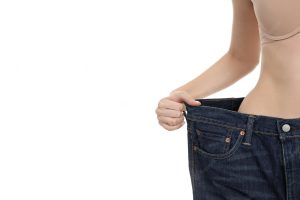Anya taylor-joy weight loss

If you’re looking to lose weight, you’ll likely want to start by figuring out what’s working for other people and adapting it to your own body. One popular approach is the ketogenic diet, which involves eating mostly fats and very few carbohydrates. While this strategy may be perfect for some people, others may not be able to stick with it for long periods of time or may find that they experience unpleasant side effects.
If you’re looking for a weight loss approach that’s easier to follow and won’t require you to radically change your lifestyle, you might want to consider using an AI-powered weight loss program. These programs use data collected from users in order to help them develop tailored plans that will help them lose weight safely and effectively. So if you’re ready to give AI-assisted weight loss a try, be sure to check out the programs available on the market today!
What is a healthy diet?
A healthy diet is one that includes a variety of foods from all food groups. It should include plenty of fruits and vegetables, whole grains, low-fat and nonfat dairy products, lean protein sources, and limited amounts of saturated and unhealthy fats.
The dangers of obesity
obesity is a major public health problem in the United States, with an estimated 36.7 million adults classified as obese in 2013. This number is projected to increase to 70.2 million by 2030 if not addressed. The consequences of obesity are numerous and include heart disease, stroke, type 2 diabetes, some types of cancer, and infertility. In fact, obesity has been linked with an increased risk for death in almost every age group.
Obesity is a complex issue that requires multiple interventions to be successful. Unfortunately, many people do not take the necessary steps to address their weight concerns. This can result in complacency and inaction, which can lead to serious health problems down the road. Here are five things you can do to reduce your risk of obesity:
1) Make sure you are getting enough exercise. Obesity is associated with a lack of physical activity and poor diet, so making sure you are getting at least 30 minutes of exercise every day is important for your overall health and well-being. Exercise can be done at any time, so it is important to find a routine that works for you.
2) Avoid eating too much sugar and processed foods. These foods
How can I lose weight?
If you want to lose weight, there are a few things you need to do. First, make sure that you are eating healthy foods. Second, find a workout routine that fits into your lifestyle. Third, be persistent in sticking to your plan. Fourth, make sure to have regular check-ins with your doctor to make sure that you are on the right track.
Is the Atkins Diet right for me?
The Atkins Diet is a low-carbohydrate, high-fat eating plan that has been popular for years. But is it right for you?
The Atkins Diet is a low-carbohydrate, high-fat eating plan that has been popular for years. But is it right for you?
The Atkins Diet is a popular weight loss diet that recommends eating low-carbohydrate and high-fat foods to lose weight. While the theory behind the diet is sound, it’s important to consider if the Atkins Diet is right for you before starting.
The Atkins Diet was originally developed as an alternative to the standard American diet. The standard American diet is high in carbohydrates and sugar, which can lead to obesity and other health problems. The Atkins Diet was designed to help people lose weight by reducing their intake of carbs and sugar while adding more fat to their diets.
There are a few things to consider before starting the Atkins Diet. First, it’s important to understand how many carbs you need daily to maintain your health. According to the Centers for Disease Control and Prevention (CDC), women should have about 46 grams of carbs per day and men should have about 56 grams of carbs per day. That means you
The ketogenic diet – what is it and how does it work?
The ketogenic diet, or keto for short, is a high-fat, low-carbohydrate diet that was first developed in the 1920s as a treatment for epilepsy. It is now being used to manage a variety of health conditions, including weight loss.
How does the ketogenic diet work?
When you follow a keto diet, your body enters a state of ketosis. Ketosis is when your body uses fat as its primary energy source instead of glucose. This switch to using fat instead of glucose puts your body into a metabolic state called ketosis. The benefits of entering ketosis include:
• Reduced hunger and cravings because your body isn’t using glucose to feed its cells
• Improved mental clarity and focus because you’re using up all of your stored energy instead of burning through it quickly
• Greater energy and stamina because you’re using up all of your stored energy rather than burning through it quickly
What to eat on a keto diet
When starting a keto diet, it can be hard to know what to eat. There are so many different foods that are keto-friendly that it can be hard to decide what to put on your plate. Here are some tips for eating on a keto diet:
1. Stick to low-carbohydrate vegetables and fruit. These are the most keto-friendly foods because they will help you stay in ketosis and boost your metabolism.
2. Try to limit your intake of high-carbohydrate foods like bread, pasta, and rice. These foods will raise your blood sugar levels and insulin levels, which can throw off your keto diet plan.
3. Make sure you’re getting enough protein on a keto diet. Protein helps keep you feeling satiated and helps you build muscle while on a keto diet. Opt for high-quality sources of protein, like meat, fish, eggs, and legumes.
4. Drink plenty of water on a keto diet. It’s important to stay hydrated so that you don’t experience any weight loss struggles or cravings.
5. Avoid processed foods and sugary drinks when following a keto diet.

Exercising on a keto diet
If you are looking to lose weight on a keto diet, exercise is essential. According to the website KetoCalculator.com, an individual’s basal metabolic rate (the amount of energy expended at rest) stays the same whether they are eating a high-fat or low-carb diet, as long as the individual is burning enough calories through physical activity.
That means that if you’re trying to lose weight on a keto diet, 20 minutes of cardiovascular exercise three times a week is all you need to stay in calorie deficit and start seeing results. A more comprehensive approach that also includes strength training and balance training can help you achieve your fitness goals even faster.
If you’re new to exercise or don’t have time for a full-blown workout, try one of these five simple tips for working out on a keto diet:
1. Find something you love to do: Whether it’s hiking, biking, swimming, or running, find something you enjoy doing that gets your heart rate up. Doing something you hate will only make it harder to stick with your routine.
2. Mix up your routine: If you find yourself getting bored
Nutrition for a keto diet
What is a ketogenic diet?
A ketogenic diet, or keto diet for short, is a very low-carbohydrate, high-fat diet that helps control blood sugar levels. On a keto diet, you eat lots of healthy foods like meat, fish, eggs, vegetables and fruits. Instead of carbs, which turn into glucose in the body, on a keto diet you rely on fatty acids and ketones for energy. This helps to keep your energy levels stable and your moods positive.
What is an eating disorder?
An eating disorder is a psychiatric disorder that includes abnormal eating habits and distorted body image. Eating disorders can result in weight loss, malnutrition, and even death. Some people with eating disorders may avoid food altogether or eat very little, while others may over-consume food or exercise to extremes in an attempt to lose weight.
Types of eating disorders
There are many different types of eating disorders, and each one has its own set of symptoms. Here are the six most common types:
1. Anorexia nervosa: People with anorexia nervosa starve themselves, often to the point of damaging their health. They may also avoid eating any food that they think is “bad” or “unhealthy.”
2. Bulimia nervosa: People with bulimia nervosa binge and purge, meaning they eat a lot then vomit or exercise heavily to rid themselves of the calories. This can lead to extreme weight loss or weight gain.
3. Dysphagia: People with dysphagia have difficulty swallowing, which can lead to problems with food intake and weight gain.
4. Overeating disorder: Overeaters overeat for any number of reasons, including feelings of anxiety or guilt. This can lead them to obesity or dangerously low weights.
5. Binge eating disorder: People with binge eating disorder binge on a large number of food items in a short period of time (typically two hours or less). This can lead to weight gain and health problems.
6. Compulsive overeating disorder:
The signs and symptoms of an eating disorder
If you are experiencing any of the following signs or symptoms, it is important to seek professional help:
-Extreme weight loss or gain, even if it’s just a few pounds
-Obsession with calorie counting or restrictive eating patterns
-Excessive exercise that’s not part of your regular routine
-Negative thoughts about your body or food
-Recurring feelings of guilt, shame, and inadequacy
Treatment for an eating disorder
If you are struggling with an eating disorder, there is hope. The following treatment options may be helpful for you.
Therapy: Therapy can help individuals learn how to identify and manage emotions, thoughts and behaviors associated with their eating disorder. A mental health professional can provide guidance and support during this process.
Medications: Medications may help to regulate eating behavior and reduce cravings. Some individuals require medication for long-term treatment; others may only require short-term therapy or medication as a stepping stone to complete treatment.
Surgery: Surgery may be necessary for some individuals who have anorexia or bulimia nervosa. This type of surgery can help to restore weight, improve body image and decrease feelings of shame or self-loathing.




